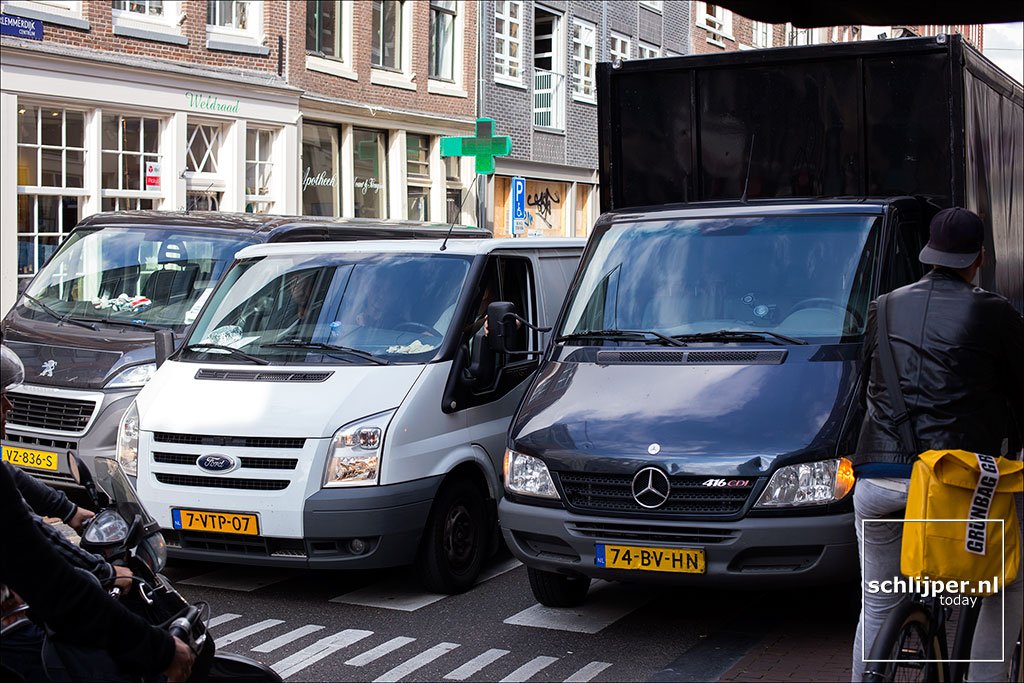Like in many cities, the inner center of Amsterdam is transforming into a more attractive place for pedestrians and cyclists by creating more space for these slow modalities. Entrepreneurs see their profits growing since an attractive city center attracts more customers and business.
However, shops and HoReCa need to be supplied as well. With more space given to the slow modalities, the urban logistics sector has less room to deliver goods. On the other side, the city logistics movements have many adverse effects on the walkability in cities too. This is a paradox, where entrepreneurs profit from the more attractive city center, while on the other side, they have problems supplying their shops, bars, and restaurants. In practice, city logistics and walkability conflict. In Amsterdam, this is an issue where the pressure on the city center is much discussed.

Research by UvA student Jonathan Formanek in 2015 took a pedestrian’s view and analyzed the pressure of city logistics on the city center. By looking at the local Haarlemmerstraat/Haarlemmerdijk, it became clear that the city logistics negatively affected the shopping area and that the walkability in the street was under pressure.
This is not striking because the street is already crowded with 30.000 cyclists and a few thousand pedestrians a day. However, the problem worsens because the high commercial density and high commercial diversity of the approximately 250 commercial facilities leads to 200-300 logistics movements a day.
Nevertheless, a reduction of between 10% and 20% of city logistics movements is possible by implementing potential solutions. This will solve part of the problems in the Haarlemmerstraat/Haarlemmerdijk and enlarge the walkability in the area. However, more research is needed to understand the whole logistics process better. Also, the stakeholders should cooperate more to reach this goal, and the gap between the policymakers and the real-life situation should be bridged.
Source: Jonathan Formanek
Picture: Thomas Schlijper
